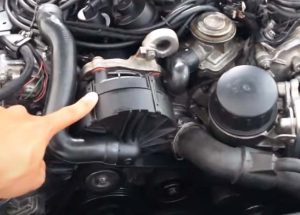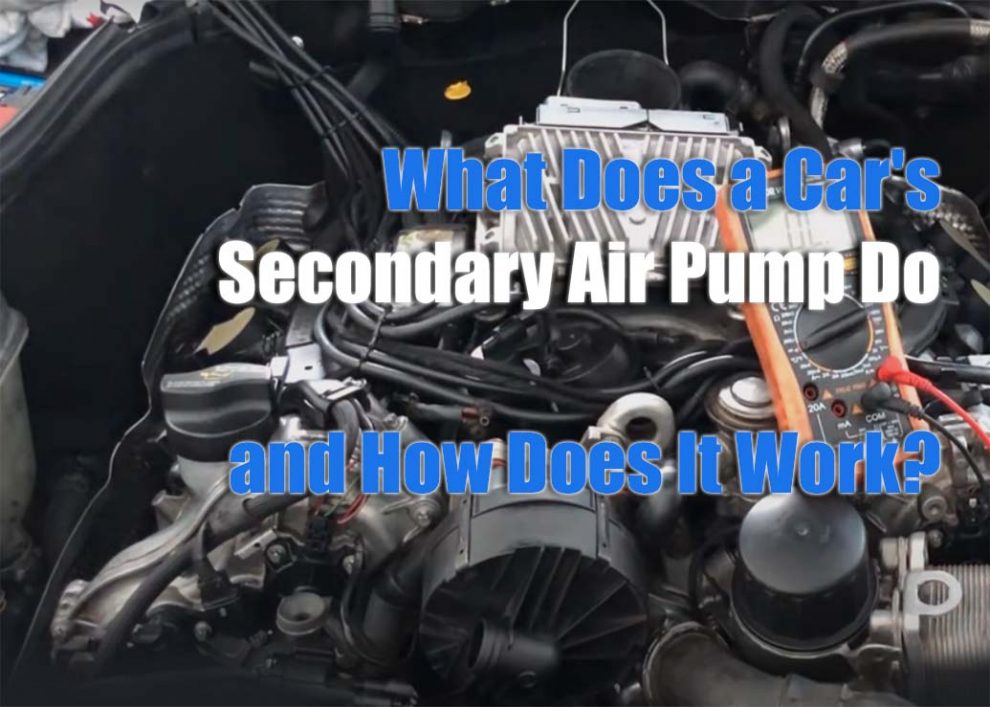This article explores what the secondary air pump in vehicles does, detailing the air pump system components, how it works to reduce emissions and engine warm up times, symptoms of a faulty pump, and when pump replacement is needed.
The secondary air injection pump (often abbreviated as the “air pump”) is an emissions control device installed on most modern gasoline-powered vehicles. It pumps fresh atmospheric air into the exhaust manifold once initial cold engine startup occurs. Air is injected into the exhaust ports to allow additional oxygen for burning uncombusted hydrocarbon particles left over from the combustion process. This significantly reduces tailpipe emissions during initial warm-up cycles when engines run richest.
Secondary Air Pump System Components
Some of the key components that make up a complete secondary air injection include:
-
Air Pump: Electrically-powered rotary vane or piston pump that flows filtered ambient air. Can be engine belt-driven or electric.
-
Check Valve: One-way valve mounted on or near the pump preventing backflow. Critical for regulating unidirectional airflow.
-
Distribution Hoses and Pipes: Durable high-heat rubber hoses route air through metal transfer pipes to the exhaust manifold and catalytic converter.
-
Control Relays and Sensors: Monitor engine conditions like coolant temperature, throttle position and oxygen sensors to activate air pump operation for emissions reduction.
Combined, these components work in sequence to inject fresh oxygen into oxygen-starved areas of the exhaust stream to re-burn fuel remnants and emissions immediately after cold starting. This secondary air lowers pollution until the engine fully warms up.
How a Secondary Air Pump Works
 The secondary air injection system activates shortly after any cold engine startup based on initial readings from coolant and oxygen sensors. The engine control module activates the air pump once initial combustion begins at cold startup when exhaust emissions are at their highest concentrations. The electrically-powered air pump rotates, drawing in and pressurizing fresh ambient air from the air filter box area. This concentrated pressurized air flows through check valves and distribution hoses into the exhaust manifolds just downstream of the cylinder head ports.
The secondary air injection system activates shortly after any cold engine startup based on initial readings from coolant and oxygen sensors. The engine control module activates the air pump once initial combustion begins at cold startup when exhaust emissions are at their highest concentrations. The electrically-powered air pump rotates, drawing in and pressurizing fresh ambient air from the air filter box area. This concentrated pressurized air flows through check valves and distribution hoses into the exhaust manifolds just downstream of the cylinder head ports.
Oxygen-rich air mixes with hot enriched exhaust gases, creating secondary combustion of unburnt hydrocarbons and carbon monoxide into less harmful compounds like carbon dioxide and water vapor. Exhaust then passes through the catalytic converter to further reduce pollution before final release from the tailpipe at markedly lower emission rates. This supplementary fresh air injection continues for 2-5 minutes allowing the engine to reach minimum operating temperature, after which the pump turns off. This system allows big pollution reductions specifically right after firing up a stone-cold engine.
Reducing Carbon Emissions
Secondary air pumps are currently mandated standard equipment on all light duty gasoline vehicles in North America under EPA guidelines requiring ever-tightening tailpipe emission limits. Activating the air pump for the initial cold start minutes provide sizable reductions in unburnt hydrocarbon particulates that would otherwise discharge directly into the atmosphere as pollution. Modern computerized engine systems ensure the air pump consistently injects long enough to combat the worst emission production phase but doesn’t run perpetually wasting engine horsepower after warm up concludes. This achieves an optimal balance of pollution reduction without fuel economy penalties from extended use.
Faulty Secondary Air Pump Symptoms
 As emission devices age, drivers may notice:
As emission devices age, drivers may notice:
-
Backfiring Check Valve: Failed check valves allow exhaust gases to backflow into the pump causing noisy backfiring on initial startup. This precedes air pump failure.
-
Burning Plastic Smells: Melted and burnt electrical relay connectors cause burning odor coming from the engine bay pointing to shorted or overheated pump circuits.
-
Poor Acceleration: Clogged air hoses and exhausted air pumps unable to provide sufficient pressurized airflow hamper engine performance until operating temp is reached.
Such symptoms indicate inspection and testing of the complete secondary air injection system is needed to pinpoint emerging root cause faults before catastrophic failures strand vehicles.
When to Replace Your Secondary Air Pump
Many air pump replacement intervals fall between 60,000 to 100,000 miles depending on make/model based on:
-
Noise Increasing: As internal vanes wear out, escalating loud squeaking or grinding noises during operation signal replacement needs before total failure.
-
Check Engine Light: Diagnostic trouble codes (DTCs) for insufficient or unexpected airflow trigger the check engine light prompting diagnosis.
-
Failed Emissions: Smog testing devices may detect higher hydrocarbon levels if the air pump system cannot provide enough supplementary oxygen at cold start.
Proactively replacing a aging noisy air pump ensures ongoing engine efficiency and mandated emissions control in the cold operating regime. Our related article outlines the Best Cold Air Intake for Nissan Altima also aimed at boosting performance.
Conclusion
While largely obscured underhood, secondary air injection pumps play a vital role promoting full fuel combustion to reduce harmful emissions at cold startup when engines pollute most heavily. Monitoring your air pump health predicts problems before failure. Replacing worn pumps promptly maintains your vehicle’s engine efficiency and emissions regulation compliance. As vehicles age addressing outdated environmental equipment remains key, including checking supplementary systems like the secondary air injection regularly.


Add Comment